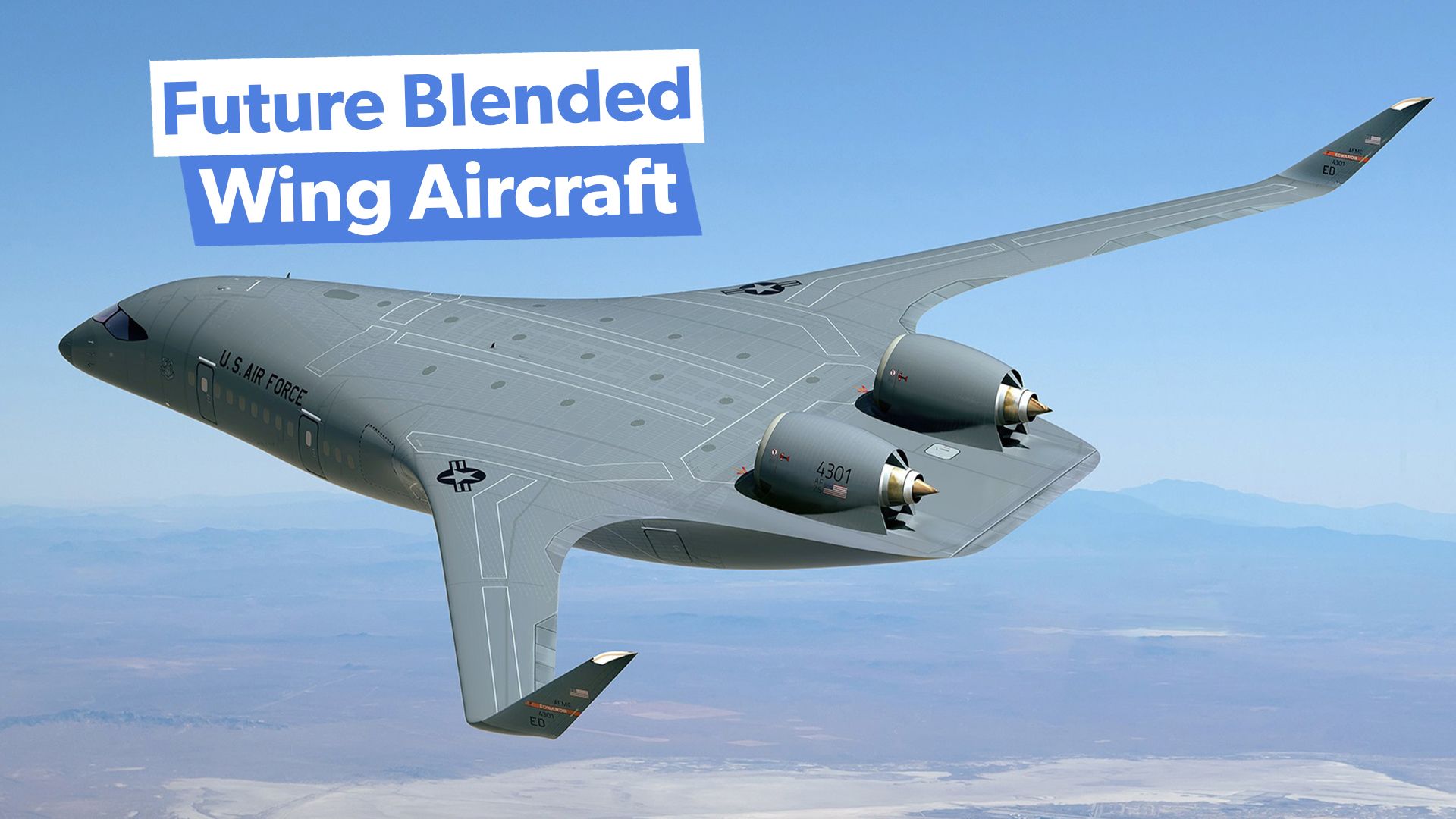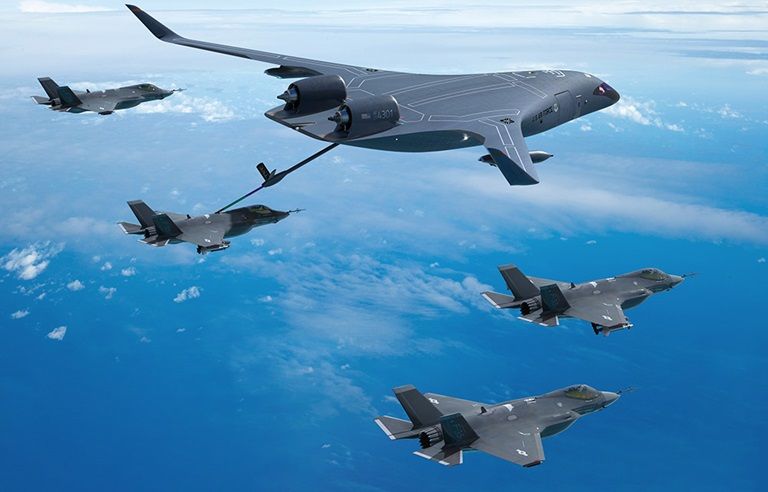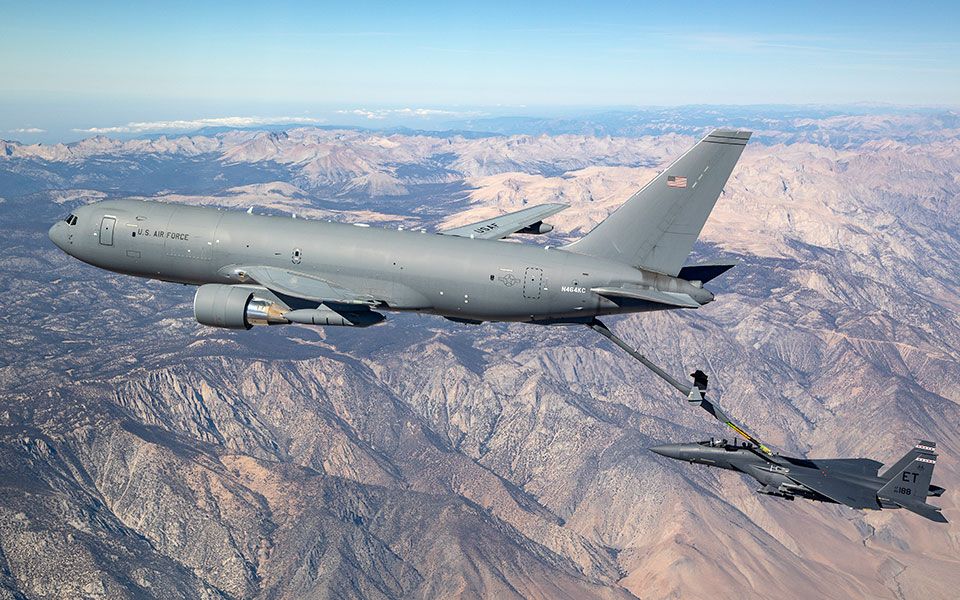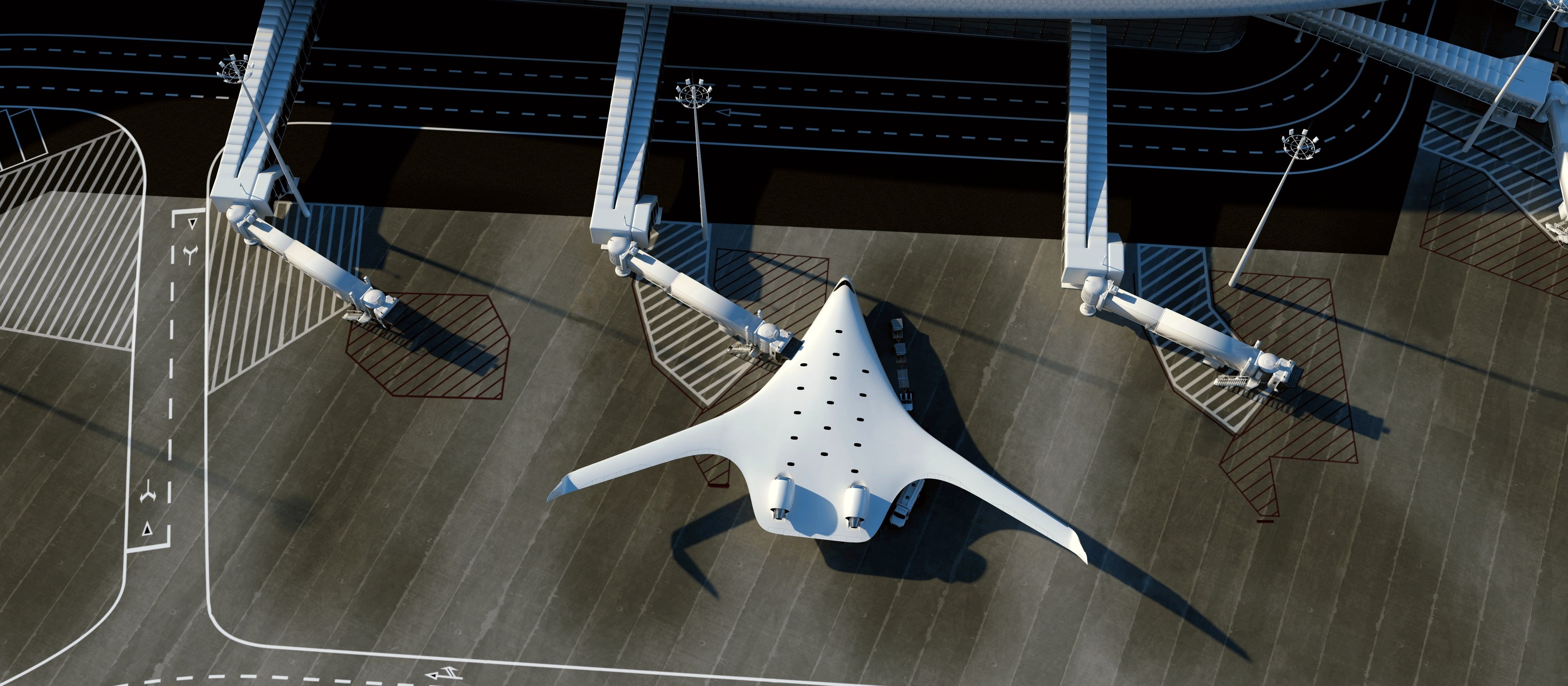Some time ago,
Airbus released three concepts for zero-emission commercial aircraft
—one of these is blended wing
bodied aircraft (BWB). However, the United States Air Force
thinks the BWB concept could also have military applications – and the benefits could be transformative. Blended-wing aircraft are not the only revolutionary military transport design currently in the works;
the DARPA is working on a ground-effect vehicle (ekranoplan) called the Liberty Lifter
, which would burr the distinction between a ship and an aircraft.
What a blended wing body aircraft is
A blended-wing body aircraft is a fixed-wing aircraft that has no clear dividing line between the main body of the aircraft and its wings. The body and wing structures of the aircraft are smoothly blended together (although they differ from the flying wing design – which has no distinct fuselage). The design’s main advantage is reducing the wetted area and the associated drag.
“Blended wing body aircraft provide numerous opportunities to address challenges we could face in future conflicts. The blended wing body aircraft will allow the U.S. Air Force to learn and apply capabilities for increased efficiency, endurance and capacity for future missions. Our aircraft dramatically improves aerodynamic efficiency over traditional tube-and-wing designs which are fundamentally unstable and require large tail surfaces, creating yet more weight and drag.” – JetZero
Benefits of Blended Wing designs:
- Increased lift (from aircraft body)
- Decreased drag (at least 30% per Air Force)
- Increased capacity
- Increased range
Photo: Northrop Grumman
The design reduces aerodynamic drag by at least 30% and gives the aircraft additional lift. In the commercial sector, passenger airlines could benefit from the maturing of the design through increased available cabin and cargo space while decreasing fuel costs.
Alaska Airlines is one airline investing in blended wing development
.
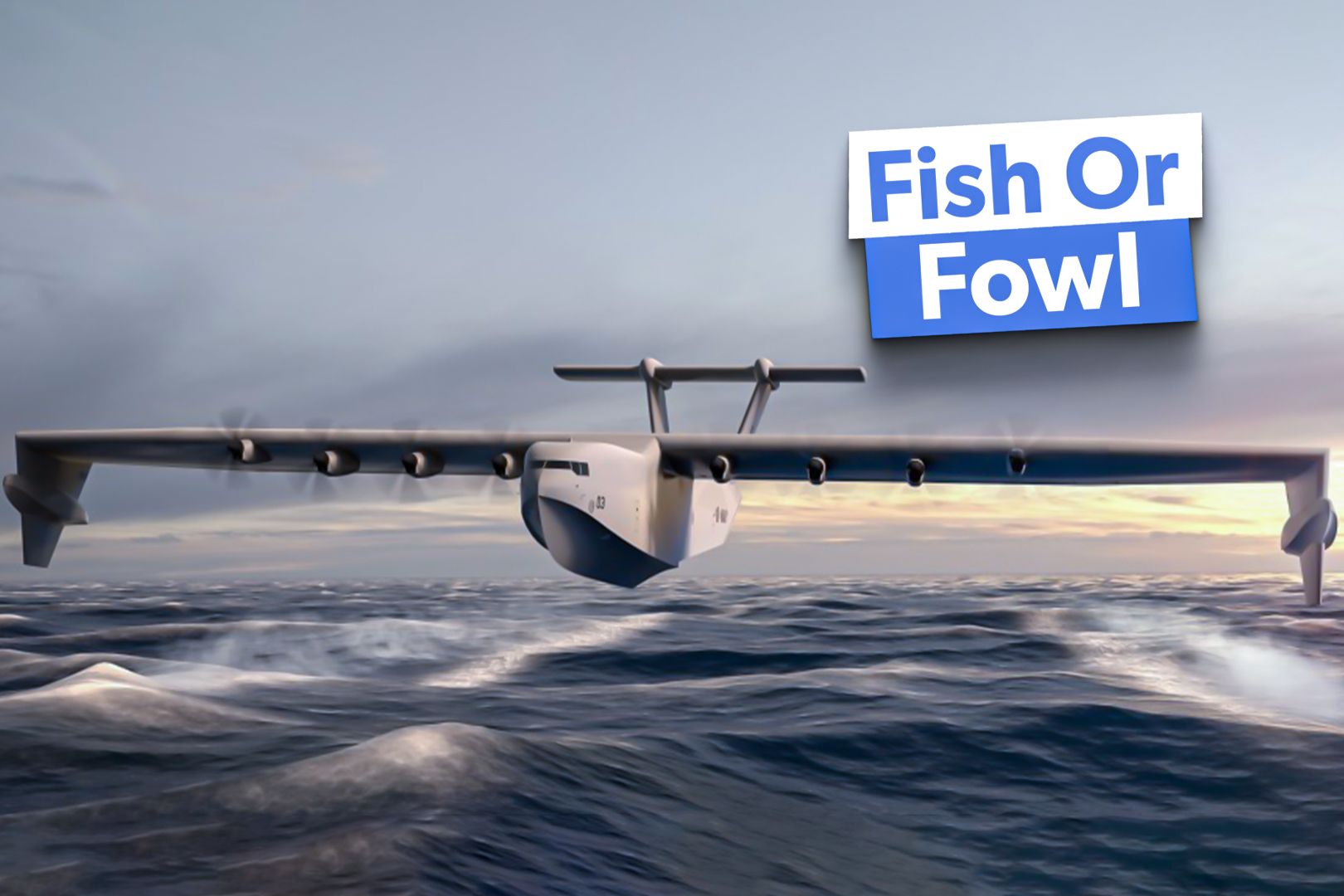
Related
Fish Or Fowl: What Is The Liberty Lifter & How Would It Work For The US Navy?
The Liberty Lifter has the potential to greatly ease the Navy’s logistical burden during rapid deployment.
How the push for net zero benefits the Air Force
The United States Air Force has not
committed to net zero (although the RAF has
and more air forces are bound to follow suit). The USAF is likely feeling some level of pressure to reduce emissions (e.g.
the USAF is looking at geopressured geothermal systems to power airbases
). The USAF has laid out its climate impact goals and has supported the development of commercial jets with military applications.
Photo: Boeing
Reduced emissions typically require greater fuel efficiency, which has significant benefits for militaries. The BWB design offers extended range, more loiter time, and increased payload delivery efficiencies—”capabilities that are vital to mitigating logistics risks.” In other words, it could provide US Air Force aircraft with increased global reach while reducing fuel demand.
“It’s been a little over a hundred years since a few brave Airmen took to the skies and proved the first aerial refueling capability, extending the global reach of our Air Force. This announcement marks another game-changing milestone for the Air Force in our efforts to maintain the advantage of airpower effectiveness against any future competitors.” – Dr. Ravi Chaudhary, assistant secretary of the Air Force for Energy, Installations, and Environment.
The idea is that blended wing-bodied aircraft could have a role in next-generation air mobility for military aerial refueling and logistics missions. Refueling and the tyranny of distance are two of the banes of the Air Force’s existence. It strains logistics and massively limits its ability to project power.
Photo: JetZero
The Air Force is keen to see how blended wing designs could be used for military transport aircraft. Military transport aircraft account for around 60% of the Air Force’s annual jet fuel consumption.

Related
A Deep Dive Into The Bombardier Blended Wing Aircraft
The Blended Wing Design is expected to help achieve industry-wide sustainability goals.
JetZero and Northrop Grumman to build BWB demonstrator
The US Air Force has selected aerospace startup JetZero
and defense contractor Northrop Grumman
to design, build, and fly a full-scale blended-wing body aircraft. The aim is to demonstrate enhanced capabilities for improved efficiency, cargo capacity, and endurance for military and commercial platforms. This will provide the Air Force with more options for future air platforms. Scaled Composites is also helping to develop and build the demonstrator.
“JetZero is developing an ultra-efficient Blended Wing Body jet with unprecedented performance. Working with the US Air Force, NASA and the FAA for entry-into-service by 2030.” – JetZero
|
JetZero’s Blended Wing demonstrator |
|
|---|---|
|
Claimed fuel savings: |
50% (JetZero claim) – up to 20% per Airbus |
|
Engines: |
Existing CFM International LEAP or Pratt & Whitney PW1000G engines |
|
Air Force contract award date: |
August 2023 |
|
Air Force contract investment: |
$235 million (more from private investors) |
|
First full-scale flight: |
Planned for first quarter of 2027 |
|
Application: |
Military transport/aerial refueling |
Photo: JetZero
JetZero suggests that its new design could offer 50% fuel savings and that it could enter into service by 2030. The startup calls the blended wing the “biggest leap in commercial aircraft design since the beginning of the jet age.” Besides being able to run on 100% sustainable aviation fuel (like most modern aircraft), it will have the internal volume to accommodate hydrogen fuel.
The Air Force Operational Energy Office has previously stated it expects the completion of initial flight testing as early as 2027.
